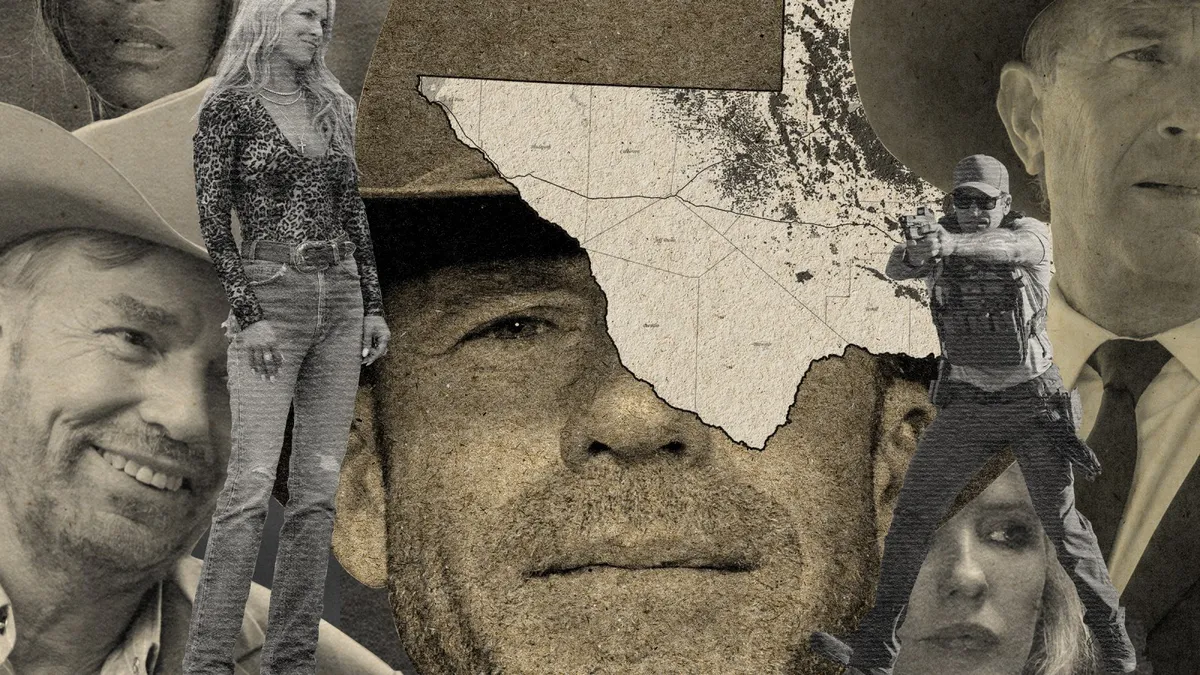
Taylor Sheridan has a unique approach to storytelling that often leaves audiences captivated yet exhausted. In just seven years, he has produced an impressive eight TV shows, resulting in a staggering 164 episodes, most of which he has written by himself. This prolific output is particularly striking when compared to iconic series like Breaking Bad and Better Call Saul, which collectively took 14 years to produce 125 episodes. Sheridan's work not only surpasses their quantity but also encompasses a diverse range of genres, a feat that even legendary producers like Dick Wolf and Shonda Rhimes cannot claim.
While three of Sheridan's shows are set within the Yellowstone universe—namely the original series, 1883, and 1923—he has also ventured into different genres with shows like Lioness, a CIA thriller featuring stars such as Zoe Saldaña and Nicole Kidman, and Landman, which delves into the oil industry with talents like Billy Bob Thornton and Jon Hamm. Additionally, Sheridan oversees three other shows—Tulsa King, Mayor of Kingstown, and Lawmen: Bass Reeves—where he retains significant creative control.
One of the standout features of Sheridan's work is the visual appeal. His shows are often described as stunning portrayals of Americana, shot with a cinematic flair that makes even the harsher realities of life seem romantic. For instance, in Landman, the Texas oil fields are captured during golden hour, turning even the less glamorous aspects of the industry into something beautiful. This aesthetic not only enhances the viewing experience but also reinforces the themes of resilience and struggle against powerful forces.
Unlike many writers who collaborate in bustling Hollywood environments, Sheridan prefers to work alone in Wyoming. He prides himself on his ability to produce scripts quickly, often completing them in just a day and sending them directly to actors without waiting for studio notes. This method has generated some controversy, particularly among members of the Writers Guild, who have criticized his refusal to staff his shows. Sheridan's attempt at collaboration with Terence Winter on Tulsa King was fraught with challenges, leading to a tumultuous working relationship.
In many of Sheridan's narratives, the concept of diligence is paramount. His characters often embody a relentless work ethic, dismissing the traditional notions of weekends and downtime. This quality parallels that of successful figures like Elon Musk, who advocates for working through weekends to gain an advantage. Sheridan's characters mirror this sentiment, portraying individuals deeply invested in their pursuits, regardless of the cost.
My own connection to Sheridan's world began in 2018 when I profiled him just before Yellowstone premiered. At the time, he was primarily known for his screenplays for films like Wind River, Sicario, and Hell or High Water. These films often explore themes of marginalized communities facing adversity. During my visit to his home in Park City, Utah, I witnessed his passion firsthand as he shared personal stories about his family's ranch in Texas, which adds a layer of authenticity to his storytelling.
After the success of Yellowstone, Sheridan made significant investments in his passions, including purchasing the expansive Four Sixes Ranch in West Texas for $342 million. This acquisition not only serves as a backdrop for his shows but also allows him to monetize his assets by renting them out for filming. The Yellowstone brand has since expanded into merchandise, from clothing lines to lifestyle products, further solidifying Sheridan's position in the entertainment industry.
While Sheridan's shows often feature strong female characters, they are sometimes portrayed through a lens that raises eyebrows. For example, Beth Dutton in Yellowstone is an antiheroine who engages in extreme actions, suggesting that a woman must adopt traditionally masculine traits to succeed in a male-dominated world. Although Sheridan has made strides in representing women, his approach often defaults to outdated stereotypes that can undermine their complexity.
Despite the groundbreaking themes in Sheridan's work, he has faced criticism for his portrayal of certain issues, particularly regarding Indigenous peoples. His film Wind River received acclaim for addressing sexual violence against Native Americans, yet he faced backlash for suggesting that his film played a role in passing the Violence Against Women Act. Such controversies highlight the complexities of Sheridan's narrative style and the cultural implications of his storytelling choices.
Taylor Sheridan's relentless drive to produce content has led to his rise as a significant figure in contemporary television. His unique storytelling, combined with a strong visual aesthetic and themes of ambition, resonate with audiences. However, the controversies surrounding his portrayal of gender and cultural issues remind us that even the most successful creators can spark debate. As audiences continue to engage with his work, the question remains: what legacy will Sheridan leave in the ever-evolving landscape of television?